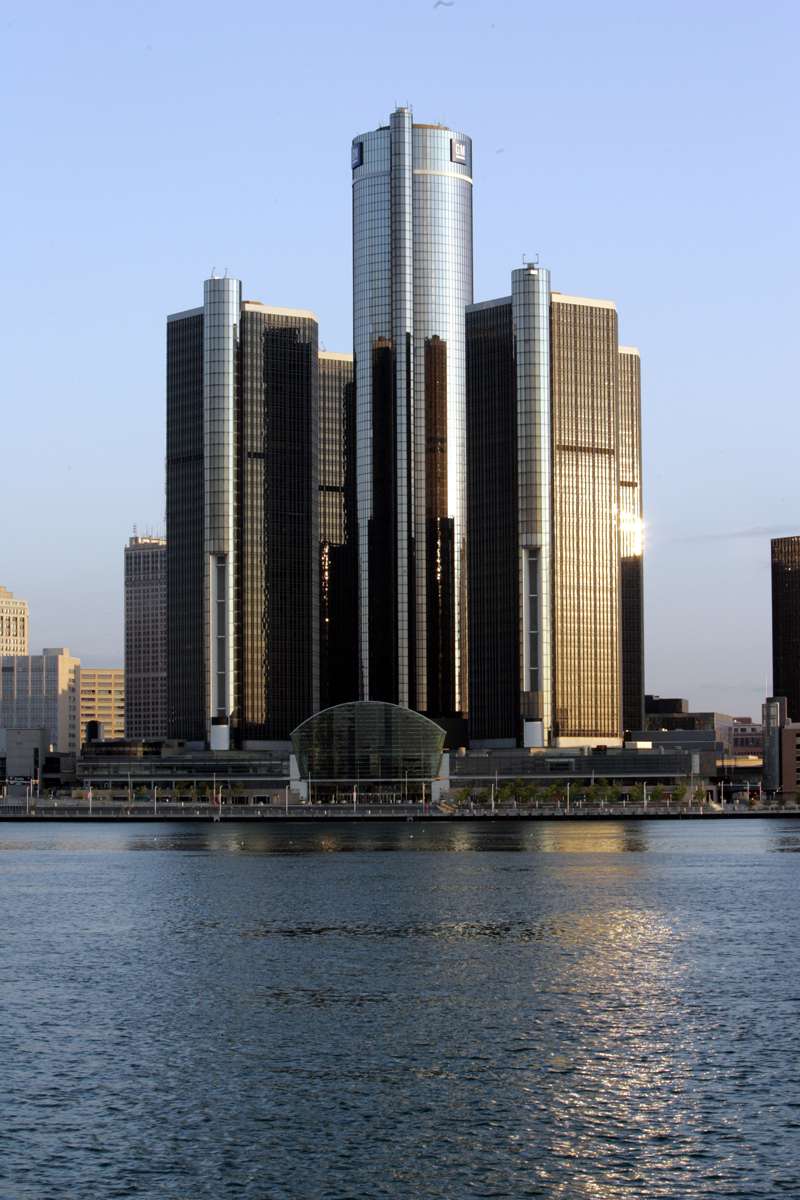Detroit Restarts Its Engines
Detroit Restarts Its Engines
If there is one image of the desolation of Detroit burned into the collective retina, it is likely the ruins of the Packard Motor Company plant on East Grand Boulevard. According to Ren Farley, researcher at the University of Michigan’s Institute for Social Research, it’s “probably the biggest industrial ruin in the United States and, perhaps, in the world.”

The Packard plant, designed by Albert Kahn, the foremost industrial architect of the early 20th century, opened in 1903 and by 1910 was the largest in the U.S., employing over 6,000 workers and occupying over 30 acres on either side of the boulevard. Decades later, at its peak, the plant encompassed 70 buildings on over 50 acres and employed 40,000 workers.
Packard closed the plant in 1956. For years, portions of it were occupied by other industrial tenants, but the last one moved out in the ’90s, and since then it has been picked apart by scavengers and salvagers and occupied by squatters (and some say ghosts). Paradoxically, the reason the ruin is still standing is that it can’t burn. Kahn built it with reinforced concrete, a design innovation at a time when most industrial buildings had thick (and flammable) pine floors.

Five miles away on the Detroit River in the heart of downtown is the icon of the “new” Detroit, a complex of seven high-rise glass-sheathed buildings known as the Renaissance Center, or Ren Cen for short, General Motors’ imposing world headquarters. Over the course of a century at the forefront of the auto industry, GM has had plenty of crises, most recently, of course, filing for Chapter 11 protection in 2009 and taking a bailout with a final price tag of about $12 billion from U.S. taxpayers. But to its credit, post-bankruptcy, GM hit the ground running with a turnaround strategy focused on revitalizing its reputation for technological innovation.
Spurred on by the success of California electric car manufacturer Tesla Motors, GM climbed on the fuel-efficiency bandwagon with the Chevy Volt in 2010 and now appears to be driving the bandwagon with the Chevy Bolt EV, a mid-price subcompact electric car with a range of over 300 miles that will hit the market in late 2016.
Writing for the New York Times, Farhad Manjoo calls this “an important car for GM, and, in a larger sense, for the traditional auto industry. It demonstrates the seriousness with which automakers are taking the threat posed by start-ups that are promising to alter everything about the car business. Not only is the Bolt the first inexpensive long-range electric on the road, but it will also function as GM’s platform for testing new models for ride-sharing and autonomous driving.” GM also had the most profitable year in the company’s history in 2015, netting $9.7 billion, primarily due to strong sales in the U.S. and Canada.
It’s a good time to be working for GM, especially in Detroit. GM has 350 facilities worldwide, but Detroit is the epicenter of its electric vehicle venture. The Detroit-Hamtramck Assembly Center manufactures the Volt, and the Orion Assembly Center, 30 miles north of Detroit, the Bolt.
“The auto industry will change more in the next five years than it has in the last 50.”
Vassar grad James Stuntz ’05 came to work for GM at the Renaissance Center in 2011, just as the company was getting back on its feet after the bankruptcy. An English major with a correlate in Chinese at Vassar, Stuntz worked as a product manager for an online comedy start-up, 236.com, until it was sold to the Huffington Post, and then went to Columbia to get his MBA. He says he loved living in NYC, but he loves cars more.
“It’s always been a passion of mine,” says Stuntz. “My grandfather on my mother’s side was a car dealer. He sold Cadillacs and Pontiacs, which were both GM brands back in the day. Pontiacs are no more, post-bankruptcy, but Cadillac is still around and thriving. And my father was actually a race car mechanic for quite a while. So it’s in my blood.”
He and his wife, Mollie, moved to Detroit where they rented a loft in Brush Park, just north of the baseball stadium. They bought a house in Indian Village, a historic neighborhood on the East Side, in January of 2013. “Living in Detroit has been a really great experience,” he says. “It’s changed remarkably since we first moved here—lots of new restaurants and people moving in from all around the country. It’s really exciting to see.”
Stuntz has an office on the ninth floor of the Ren Cen with “an awesome view down the Detroit River of the Ambassador Bridge,” the suspension bridge connecting Detroit and Windsor, Ontario, Canada. He is what’s called an “experience manager.”
“I manage the customer experience over several different product lineups, focusing on the digital experience. It starts with your navigation or infotainment screen in the car, and it extends to mobile apps and websites and so on.” All GM cars are now essentially roving WiFi hotspots, connected to the Internet with 4G LTE, the nation’s strongest LTE signal.
“The major industry trends of electric cars, connected cars, autonomous cars, and shared cars make the auto industry a really exciting place to work right now,” he says. “We like to say that the auto industry will change more in the next five years than it has in the last 50.”
The same might be said of Detroit itself. “Detroit has character, more than any other city I’ve been to,” says Stuntz. “It was a boomtown for more than half a century, and then it fell about as hard as a major city can fall. Now its fragile recovery is starting to gain real momentum, thanks to a lot of genuine, hardworking people seeing opportunity and chasing dreams on a very human scale.”